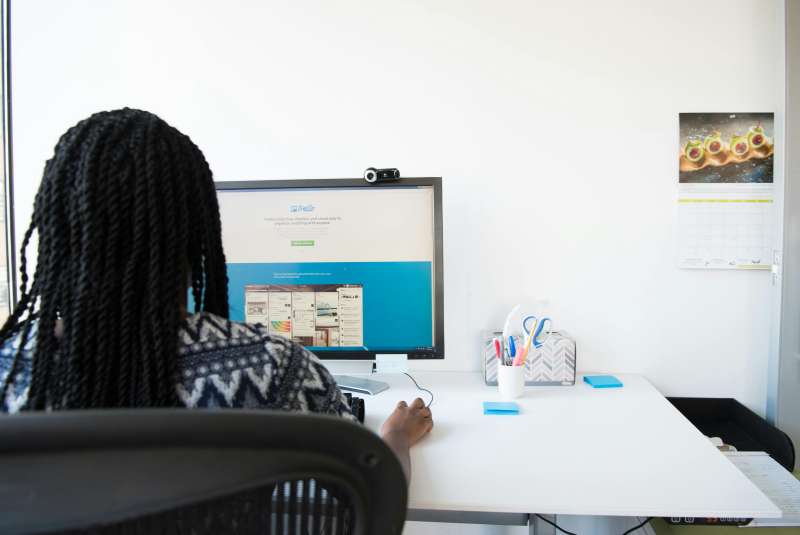Future-Ready Teams: Preparing for the Technological Shift
Published on: May 7, 2025
The Shifting Landscape of Work: Why Future-Ready Teams Matter
In the rapidly evolving world of work, the ability to anticipate change and respond proactively is more critical than ever. The technological shift underway is transforming not only how businesses operate but also how teams interact, learn, and succeed. Organizations are now challenged to build future-ready teams—groups of employees equipped with the skills, mindsets, and flexibility necessary to thrive amid uncertainty and continuous innovation. As technology advances, the nature of work is being redefined, and the pressure on HR departments to facilitate this transition has never been greater.
The future of work is characterized by automation, artificial intelligence, digital communication platforms, and a growing emphasis on remote and hybrid work arrangements. This transformation is not just about adopting new tools or systems; it is about cultivating a culture that embraces lifelong learning, adaptability, and collaboration. To achieve this, HR must leverage advanced management tools, workforce management systems, and hr software that support agile planning, employee onboarding, and ongoing development. The success of any organization in this new era will largely depend on its ability to prepare its workforce for the technological challenges and opportunities ahead.
The Essential Skills for Future-Ready Teams
Technical fluency is undoubtedly important in the digital age, but it is no longer sufficient on its own. Future-ready teams must possess a blend of hard and soft skills that enable them to navigate complex environments, solve problems creatively, and collaborate effectively across diverse contexts. The following skills are increasingly recognized as essential for teams preparing for the technological shift:
- Collaboration: The ability to work seamlessly with colleagues, both in-person and virtually, is vital. Team management tools and online employee management systems facilitate real-time communication, project tracking, and knowledge sharing, making it easier for teams to coordinate efforts regardless of location.
- Adaptability: As technology evolves, so do business processes, customer expectations, and market dynamics. Employees who are adaptable can quickly learn new systems, adjust to changes in workflows, and embrace new roles as needed. Workforce planning software and labor management software can support this by providing data-driven insights into workforce needs and enabling flexible resource allocation.
- Creativity: Innovation is the engine of progress in the digital era. Teams that foster creativity are better positioned to identify opportunities, develop new solutions, and drive organizational growth. HR management tools can help identify creative talent and provide platforms for idea generation and collaboration.
- Technical Literacy: While not every employee needs to be a software engineer, a basic understanding of digital tools, data analytics, and emerging technologies is increasingly important. HR onboarding systems and online onboarding platforms can ensure that new hires receive the necessary training and resources to become proficient with essential technologies from day one.
- Emotional Intelligence: In a world where automation handles many routine tasks, human-centric skills like empathy, communication, and conflict resolution become even more valuable. Employee management tools and hr software can facilitate feedback, coaching, and performance management to nurture these skills.
The Role of HR in Building Future-Ready Teams
HR departments play a pivotal role in preparing organizations for technological change. Their responsibilities extend beyond traditional hiring and compliance functions to include strategic workforce planning, talent development, and change management. By leveraging workforce management services and advanced hr systems, HR leaders can create environments that foster continuous learning, experimentation, and resilience.
Key strategies for HR to support future-ready teams include:
- Agile Talent Acquisition: The pace of technological change requires organizations to be agile in their hiring practices. This means not only recruiting for current needs but also anticipating future skill requirements. Workforce management systems and online employee management systems can help HR teams identify skill gaps, track talent pipelines, and make data-driven decisions about recruitment and internal mobility.
- Comprehensive Onboarding: A robust onboarding system is critical for integrating new hires into the organization and equipping them with the tools and knowledge they need to succeed. Employee onboarding platforms and hr onboarding systems can streamline this process, ensuring a consistent and engaging experience for every employee. These platforms can also facilitate ongoing learning and development, helping employees stay current with new technologies and best practices.
- Continuous Learning and Upskilling: The shelf life of skills is shrinking, making continuous learning a necessity. HR software and management tools can deliver personalized learning experiences, track progress, and provide access to a wide range of training resources. By fostering a culture of learning, organizations can ensure that their teams remain agile and capable of adapting to new challenges.
- Performance Management and Feedback: Regular feedback and performance reviews are essential for employee growth and engagement. Employee management tools and hr systems can automate performance tracking, facilitate goal setting, and enable timely feedback. This helps employees understand their strengths and areas for improvement, while also aligning individual goals with organizational objectives.
- Change Management: Implementing new technologies and processes can be disruptive. HR leaders must act as change agents, guiding teams through transitions and addressing resistance. Workforce management services and labor management software can support change management efforts by providing communication tools, tracking progress, and measuring the impact of new initiatives.
Leveraging Technology: Tools and Systems for Future-Ready Teams
Technology is both the driver and the enabler of the future of work. To build future-ready teams, organizations must invest in the right mix of tools and systems that support collaboration, learning, and performance. Some of the most impactful solutions include:
- Workforce Management Systems: These systems provide a centralized platform for managing employee schedules, tracking attendance, and optimizing labor costs. By integrating with other HR tools, workforce management systems enable seamless coordination between HR, managers, and employees.
- HR Software and HRM Systems: Modern hr software solutions offer a wide range of functionalities, from recruitment and onboarding to performance management and analytics. Web based hr software allows for remote access and scalability, making it ideal for organizations with distributed teams.
- Employee Onboarding Platforms: Effective onboarding is crucial for setting new hires up for success. Online onboarding platforms automate paperwork, provide training modules, and facilitate introductions to team members and company culture.
- Project Tools and Team Management Tools: Collaboration platforms, project management software, and communication tools are essential for coordinating work across teams and departments. These tools enable real-time updates, task assignment, and progress tracking, helping teams stay aligned and productive.
- Labor Management Systems: Labor management software helps organizations optimize workforce allocation, monitor productivity, and ensure compliance with labor regulations. These systems can also provide insights into workforce trends and inform strategic decision-making.
Case Study: Using xTimeTo for Agile Planning and Performance Coordination
One example of a technology that supports the development of future-ready teams is xTimeTo, a workforce management system designed to streamline agile planning and performance coordination. By integrating with existing hr systems and employee management tools, xTimeTo enables organizations to:
- Automate scheduling and resource allocation, ensuring that the right people are assigned to the right projects at the right time.
- Track employee performance in real time, providing managers with actionable insights into team productivity and engagement.
- Facilitate communication and collaboration across teams, breaking down silos and enabling cross-functional work.
- Support continuous learning and development by identifying skill gaps and recommending relevant training opportunities.
- Enhance employee onboarding by providing new hires with clear expectations, training resources, and connections to mentors.
By leveraging a comprehensive workforce management system like xTimeTo, organizations can reduce administrative overhead, improve decision-making, and create a more agile and resilient workforce. The integration of such systems with other hr software and management tools further enhances their impact, enabling a holistic approach to workforce planning and development.
Building a Culture of Adaptability and Innovation
Technology alone is not enough to prepare teams for the future. Organizational culture plays a critical role in shaping how employees respond to change and pursue innovation. HR leaders must work to cultivate a culture that values adaptability, experimentation, and continuous improvement. This involves:
- Encouraging Open Communication: Teams that communicate openly are better able to share ideas, identify challenges, and collaborate on solutions. Online employee management systems and team management tools can facilitate transparent communication and feedback loops.
- Rewarding Experimentation: Innovation often involves taking risks and learning from failure. Organizations should recognize and reward employees who experiment with new approaches and contribute to continuous improvement.
- Supporting Lifelong Learning: Providing access to training, mentorship, and development opportunities encourages employees to keep their skills up to date and embrace new challenges. HR systems and workforce management services can help track learning progress and identify high-potential employees for further development.
- Fostering Inclusion and Diversity: Diverse teams bring a wider range of perspectives and ideas, driving creativity and innovation. HR management tools can support diversity initiatives by tracking representation, monitoring progress, and identifying areas for improvement.
Preparing Leaders for the Technological Shift
Leadership development is a critical component of building future-ready teams. As organizations adopt new technologies and transform their business models, leaders must be equipped to guide their teams through uncertainty and change. This requires a new set of competencies, including:
- Digital Literacy: Leaders must understand the technologies shaping their industries and be able to evaluate their potential impact on business operations.
- Change Management: The ability to lead teams through transitions, address resistance, and maintain morale is essential for successful transformation.
- Strategic Thinking: Future-ready leaders must be able to anticipate trends, identify opportunities, and align their teams with organizational goals.
- Coaching and Development: Effective leaders invest in the growth and development of their team members, providing guidance, feedback, and support.
HR software and management tools can support leadership development by providing access to training resources, tracking progress, and facilitating mentorship programs. Workforce management systems can also identify emerging leaders and provide them with opportunities to take on new challenges and responsibilities.
The Importance of Data-Driven Decision Making
Data is a powerful asset for organizations seeking to build future-ready teams. By leveraging data from hr systems, workforce management tools, and labor management software, HR leaders can make more informed decisions about talent acquisition, development, and retention. Key benefits of data-driven decision making include:
- Identifying Skill Gaps: Analytics can reveal current and future skill shortages, enabling targeted training and recruitment efforts.
- Measuring Performance: Data from employee management tools can track individual and team performance, helping managers identify high performers and areas for improvement.
- Optimizing Resource Allocation: Workforce planning software can analyze workforce trends and recommend adjustments to staffing levels, schedules, and project assignments.
- Enhancing Employee Engagement: Surveys and feedback tools can provide insights into employee satisfaction, motivation, and engagement, informing strategies to improve retention and productivity.
By integrating data from multiple sources, organizations can gain a holistic view of their workforce and make proactive decisions that support long-term success.
Remote and Hybrid Work: Adapting to New Realities
The rise of remote and hybrid work arrangements is one of the most significant changes in the modern workplace. These models offer greater flexibility for employees but also present new challenges for team management, collaboration, and engagement. HR departments must adapt their practices to support distributed teams, leveraging online onboarding platforms, management project tools, and web based hr software to:
- Facilitate virtual onboarding and training for new hires, ensuring a smooth transition into the organization.
- Enable real-time communication and collaboration through digital platforms, reducing the barriers of distance and time zones.
- Monitor performance and engagement using employee management tools and hr systems, identifying issues early and providing targeted support.
- Promote a sense of belonging and connection among remote employees through virtual team-building activities and regular check-ins.
By embracing flexible work arrangements and investing in the right technologies, organizations can attract and retain top talent while maintaining high levels of productivity and engagement.
Integrating Human and Digital Capabilities
The future of work is not about replacing humans with machines but about integrating human and digital capabilities to achieve greater outcomes. This requires a balanced approach to technology adoption, ensuring that employees are empowered to use new tools effectively while continuing to develop their uniquely human skills. HR leaders can facilitate this integration by:
- Providing comprehensive training on new technologies, ensuring that all employees have the skills and confidence to use digital tools.
- Encouraging cross-functional collaboration, bringing together teams with diverse backgrounds and expertise to solve complex problems.
- Aligning technology initiatives with organizational values and goals, ensuring that digital transformation supports the broader mission of the company.
- Involving employees in the design and implementation of new systems, gathering feedback and making adjustments as needed.
By taking a holistic approach to workforce development, organizations can maximize the benefits of technology while maintaining a strong focus on people.
Addressing Challenges and Overcoming Barriers
Preparing for the technological shift is not without its challenges. Common barriers to building future-ready teams include resistance to change, limited resources, and skill shortages. HR leaders can address these challenges by:
- Communicating the benefits of new technologies and processes, helping employees understand how changes will improve their work and the organization as a whole.
- Providing ongoing support and training, ensuring that employees have the resources they need to adapt and succeed.
- Fostering a culture of trust and psychological safety, where employees feel comfortable sharing concerns and asking for help.
- Partnering with external experts and workforce management services to access specialized knowledge and support for complex transformations.
By proactively addressing these challenges, organizations can create an environment where teams are empowered to embrace change and drive innovation.
The Road Ahead: Continuous Evolution and Growth
The journey to building future-ready teams is ongoing. As technology continues to evolve, organizations must remain agile, open to new ideas, and committed to continuous improvement. By investing in advanced management tools, workforce management systems, and hr software, HR leaders can equip their teams to navigate the complexities of the modern workplace and seize the opportunities of the digital age.
Ultimately, the organizations that thrive in the future will be those that prioritize adaptability, foster a culture of learning and innovation, and leverage the full potential of their people and technology. By preparing now, HR can ensure that their teams are not only ready for the technological shift but are also poised to lead the way into a new era of work.










